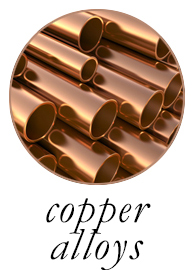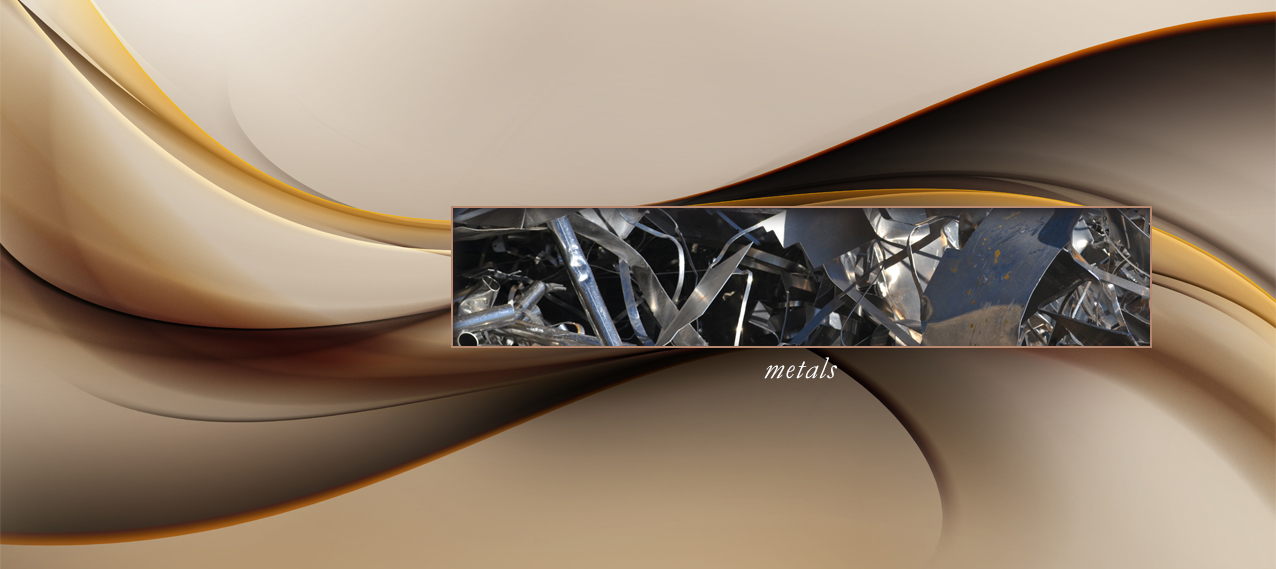
Copper alloys are defined as all alloys containing at least 50% copper. They can be divided into four categories:
(a) copper-zinc alloys (brasses);
(b) copper-zinc-nickel alloys (nickel silvers);
(c) copper-tin alloys (bronzes);
(d) other copper alloys (copper alloys).
Copper-zinc alloys (brasses)
Brasses are divided into two subcategories: duplex brasses and special brasses.
Duplex brasses
Depending on the characteristics, they can be grouped into two groups:
– α brasses, which are very malleable and therefore can be cold rolled, drawn, etc.;
– β brasses, which can be worked hot and are therefore suitable for extrusion and hot forging.
The addition of zinc changes the properties of copper, affecting its mechanical strength, malleability, electrical and thermal conductivity, etc. Even the colour changes depending on the percentage of zinc added. At one end of the scale is tombac (95% Cu, 5% Zn), up to imitation gold (15-20% Zn).
The main uses are in the field of electronics (contacts, switches, etc.), furniture (lamps, hinges, decorative elements, etc.), mechanics (screws, bolts, gears, etc.), transport (radiators), armament (cases and parts of firearms), costume jewellery.
Special brasses
These are brasses where other elements are present in lower proportions than zinc, modifying the characteristics of the duplex brass and enabling its use for different applications.
The word itself relates to the special uses of these brasses, with the most common including leaded brass (which is in fact a common brass and is used for automatic machining), aluminium brass, which is resistant to salt water and soft water and is used in pumps and capacitors, manganese brass for naval propellers, Admiralty brass (Cu, Zn, Sn), nickel brasses and silicon brasses.
Copper-zinc-nickel alloys (nickel silver)
These are ternary copper alloys containing more than 10% zinc and nickel ranging from 12% to 18%, up to 25%.
This alloy is highly malleable and therefore can be cold rolled. These alloys are generally used for cutlery and household objects, possibly after silver-plating, and for mechanical parts designed to be resistant to seawater. In addition to normal nickel silvers, there are also some complex alloys due to the presence of Fe, Mn, Sn, Pb and Al, which can also be used for working with glass.
Copper-tin alloys (bronze)
Bronze is more resistant to wear than brass and easier to cast. Laminated or extruded bronze is mainly used for electronics, boat parts, springs and coins. Bronze castings are used in mechanical parts, bearings, valves, bells, statues and other artistic works.
Other copper alloys (copper alloys)
These are copper alloys containing an element that gives the material special properties. The most commonly used and best-known alloy is perhaps aluminium bronze, which has high mechanical and corrosion resistance.
Other special alloys are:
Beryllium copper: has a high electrical conductivity which makes it particularly suitable for manufacturing springs, membranes, watch parts, electrodes, flame-resistant tools.
Cupronickel: has various uses such as pipes in condensers, coins, tools, resistance wire, while for electrical resistors the alloy is called constantan (55% Cu – 45% Ni).
